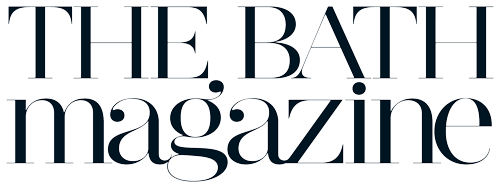The work of artists Paula Rego and Francisco de Goya both focus on the wonderful, bizarre, and frightening aspects of human experience. They lived in different eras, but their inspirations were in tune, as a new exhibition at the Holburne illustrates.
Imagine having a creative connection with someone who lived two centuries before you. That’s what happened with artists Paula Rego (1935-2022) and Francisco de Goya (1746-1828). This association is being recognised in a new exhibition at the Holburne, opening at the end of this month, Uncanny Visions: Paula Rego and Francisco de Goya, exploring the distinctive threads of the dark and unsettling in both artists’ work.
The uncanny is presented by both in their themes and imagery, each of them rooted in popular and folkloric elements. Director of the Holburne, Chris Stephens, explains, “In the case of Goya this direction was shown through the absurdity of social rules and for Rego it was in the ruthlessness of childhood verses.”
The exhibition was conceived by former Holburne curator Monse Pis Marcos, motivated by the museum’s determination to bring Rego’s work to Bath, as one of the great British artists of the last generation. Chris says, “We were conscious that part of Rego’s brilliance is this amazing combination of the assumed innocence of childhood and the darker human drive that you get in fairy tales and nursery rhymes. And there was also the recognition that this was something she shared with Goya, who was one of her great heroes. Goya, in particular, embodies so many of those shared interests in the way he dwells on the darker sides of human behaviour.”
The core part of the exhibition displays Goya’s suite of Los Disparates (The Follies) (1815-1823), which were printed posthumously, and Rego’s suite of Nursery Rhymes (1989). “Both sets of etchings share these similar macabre and uncanny images”, says Chris. “They also have in common the fact that they are satirising human behaviour rather than taking a bilateral or partisan satire of one political position or one nation. It’s more universal than that, recognising that cruelty and absurdity is inherent in all humans and their behaviour. This is what great literature, nursery rhymes and fairy tales tap into.
“Alongside these are unique works on paper by Rego, watercolours and drawings, which explore similar themes like the cruelty of childhood, and then the three-dimensional figures that she often used as models for her pictures, which she increasingly saw as sculptural works in themselves.
“Paula saw the propensity for children to be cruel and sadistic in her nursery rhyme prints. She also used this later when she came back to painting after her husband died, when she portrayed animals as proxies for human behaviour. That again is an element that you can find in a nursery rhyme, where you have these malign spiders bothering Miss Muffet on her tuffet.”

Rather than being a two-artist show, the exhibition gets its energy from Rego’s narratives and their links to Goya. “The exhibition started off treating the two artists equally, but eventually it became more about Rego and what she took from Goya. It’s about consciousness in appropriation – some of her compositions you can see are directly in Goya’s work. It’s not just a common interest or tone – she’s actually looking at his work.”
With Rego originating from Portugal and Goya from Spain, they have an Iberian background in common, and also some dark aspects to their lives that would have influenced their artwork. “Rego had problems with mental health and battled with depression throughout her life and I suspect that this background encouraged the opening up of a different perspective for both of them.”
Chris continues, “A lot of Rego’s work is also about being a woman in a patriarchal society – she grew up in Portugal under a fascist regime where politics in general and gender politics were very backward and repressive by contemporary standards. Her work, though, was more abstract than specifically political.”
Goya became deaf in his late twenties, and he was affected deeply by the wars and revolutions in his lifetime and was tormented by a dread of old age and fear of madness. “Goya became quite surreal in some of his imagery, clearly coming from a genuinely dark place inside, and it’s the same with Paula. And the uncanny in their work rides through the surrealist idea of using the unconscious in unexpected juxtapositions.”


The exhibition also profiles two of the Seven Deadly Sins created by Rego in three-dimensional form. “We have these two wonderful larger-than-life size pieces focusing on gluttony and pride. Pride is a rather wonderful kind of 18th-century, Goya-esque scene, a silver gray, figure just like Queen Charlotte in Bridgerton, and she will be sitting in our picture gallery. The other is Gluttony, showing a big-bodied woman apparently devouring her children, which is a direct Goya reference to his painting Satan Devouring his Son. And you can recognise a malicious kind of joy in portraying these awful human qualities.”
These two artists lived two centuries apart and yet were closely allied in their visions. Adding an extra interconnected strand to the exhibition is a group of Goya etchings, from different portfolios, that Rego owned herself, some of which were in her bedroom when she died. Perhaps this is the most moving acknowledgement of Goya’s influence on Rego and of the intensity of their shared artistic vocabulary.
Uncanny Visions: Paula Rego and Francisco de Goya, Holburne Museum, 27 September – 5 January 2025; holburne.org


